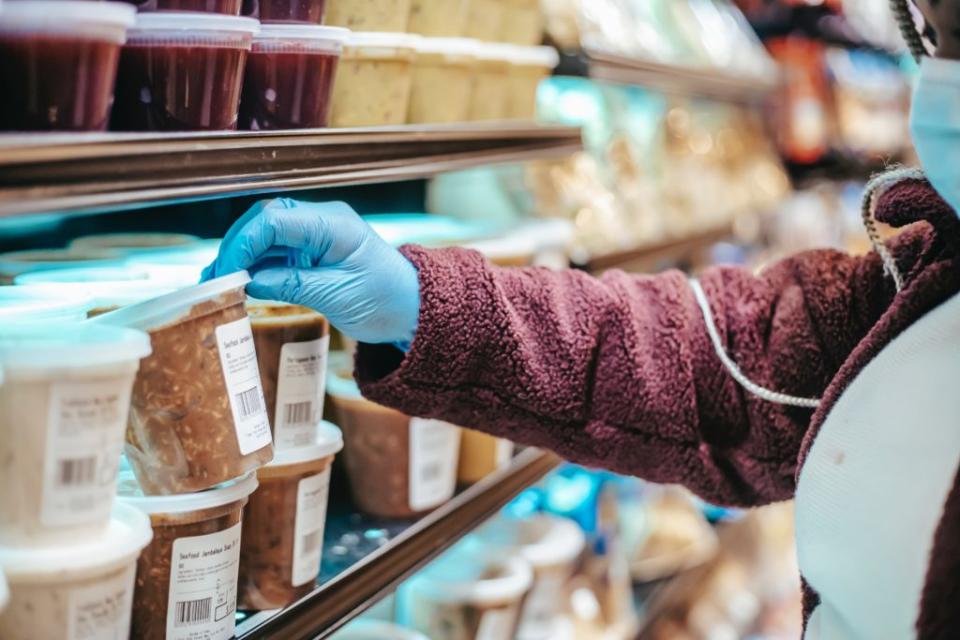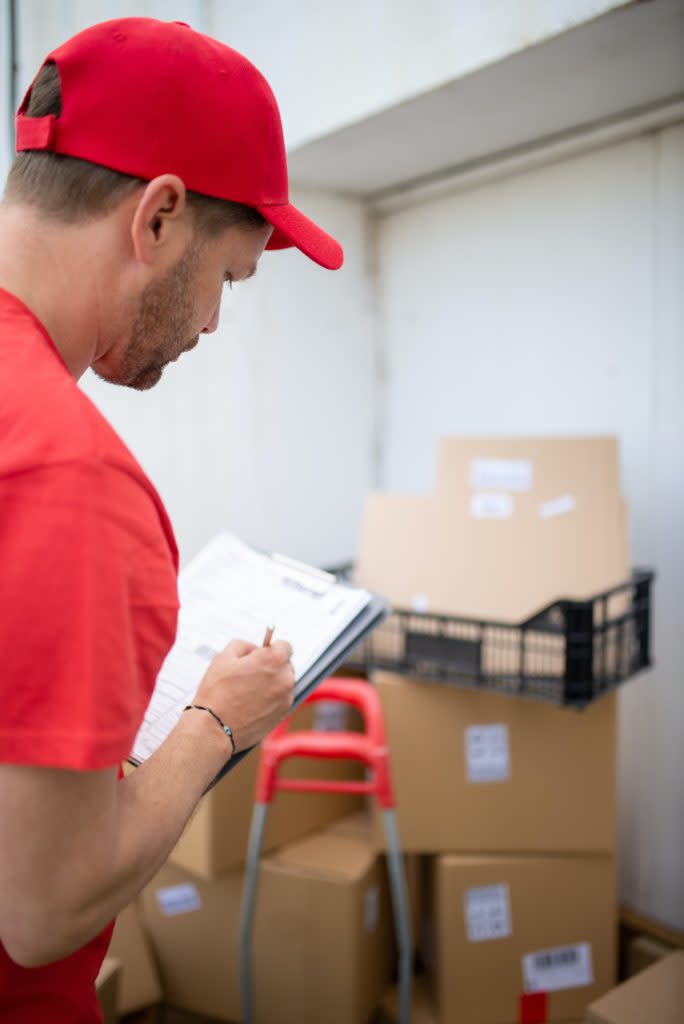TikTok's Pink Sauce: Why FDA Approval Matters And How To Get It

Everyone is talking about TikTok’s mysterious pink sauce. You couldn’t get away from it if you wanted to because it’s all over social media. But what exactly is it? That’s the thing, no one really knows. And that’s why it’s causing such as fuss on social media — but most importantly, with the FDA.
What Is Pink Sauce?
Chef Carly Pii, also known as “Chef Pii,” has amassed thousands of followers on TikTok for her popular yet mysterious “pink sauce.” She regularly posts video clips of herself pouring the sauce over a number of food items, including fried chicken, burgers, and chicken nuggets.
As a result, her TikTok videos drew massive interest, going viral in a short time. Part of the appeal is that Chef Pii doesn’t let on what the sauce tastes like OR what’s in it. So fans are left guessing unless they purchase it for themselves. And we can’t lie — the mystery sauce has us intrigued as well.
What Does the Pink Sauce Taste Like?
According to mixed reactions from fans, some say the taste is similar to a ranch or blue cheese dressing. Others say it has a strong garlic flavor. Many call it sweet, but not overly sweet. And others say they can taste a hint of dragonfruit.
This Pink sauce is getting out of hand 😭😭😭😭😂😂😂😂😂😂 pic.twitter.com/oTaJflR8sm
— ᴘʜᴀᴛ ʙᴏʏ𐫰 (@islandismk) July 27, 2022
So What’s The Problem?
After purchasing the pink sauce, fans started posting videos highlighting its inconsistency. Some received a bright pink sauce, while others posted a much lighter, pale pink shade. Also, many reported that their sauce was a smooth, solid pink color, while others received a pink sauce with dark specks inside.
The packaging had many social media fans feeling skeptical as well. A number of customers reported receiving bloated bottles from improper mail packaging, with some even becoming dangerously ill. They also criticized the lack of information on its nutrition label.
Wait. So y’all paying $30 to have some random woman ship y’all some secret pink sauce she made in her kitchen clear across the country THROUGH USPS in THIS HEAT? pic.twitter.com/U3k6U5XEAt
— Dae (@dae__g) July 20, 2022
People are buying unrefrigerated “pink sauce” with no preservatives from a stranger on TikTok and are shocked when they get sick? 🤔 pic.twitter.com/IVTKXzfT2h
— Ricky “Release the trade” Ricardo (@iconstatusonly) July 19, 2022
For example, the original number of servings per bottle was 444, a reference to angel numbers. Also, many speculated that the pink sauce contained dairy, a known allergen. But without a proper ingredients list, there was no real way to keep customers with food allergies informed.
A Visit From The Food And Drug Administration
When it comes to regulating American food safety, the FDA doesn’t mess around. And after Chef Pii received a visit from them, she vowed to correct the situation. Fortunately, she and her team are now adhering to the appropriate food safety laws in her state. And hopefully, this means that fans of the pink sauce can safely enjoy it going forward.
Even though the pink sauce has caused quite the stir online, it can be a learning lesson for others who want to tap into the food industry. If you’re planning to create and sell a food or beverage for public consumption, it’s important to do it the right way. Here are five ways to obtain FDA approval to sell your product:
Consider The Type of Food You Plan To Sell

Before starting your business, ensure it meets all necessary FDA regulatory requirements. To do this, first consider the type of food you plan to sell.
The FDA regulates the sale of all foods in the United States. And even though obtaining the proper certification or licensing to sell can be a pain, it’s important for not only the public’s safety but yours as well.

Fortunately, the FDA isn’t as strict regarding less risky foods and beverages. And depending on where you live, obtaining FDA approval might even be pretty easy. To cover your bases, visit the official FDA website for more information on food laws in your state.
Follow Regulations For Home-Based Businesses

Where you decide to make your food is also an important factor to consider before starting a business. Some states have laws allowing citizens to prepare and cook food from their homes, depending on what kind of food they plan to make.
For example, under the California Homemade Food Act, California residents can legally make certain foods from their homes to sell to the public. Of course, these foods have to meet a number of requirements and must be “non-potentially hazardous.”

If you plan to process food inside your home, your kitchen must also meet local and state health and safety requirements. Check with your local health department to learn how you can safely sell food from the comfort of your home.
Or For Food Facilities

Similar to home-based food businesses, there are also regulations for business owners who plan to cook food outside of their homes.
Not everyone has a nice, fancy kitchen with enough space to prep and cook large quantities of food. Not to mention, many consumables like processed meats, fermented foods, and dairy products aren’t always considered safe to prepare in a residential kitchen.

Fortunately, not all hope is lost. There are plenty of food facilities around the country that offer their kitchens for public use. And because these kitchens also have to answer to food safety laws, you can share the responsibility in maintaining proper FDA requirements.
Adhere To Proper Labeling Guidelines

Properly labeling your food or beverage products before selling them to the public is essential. If you don’t, it could spell the end of your business.
There are many things to consider when labeling your food. For example, honesty is the best policy when it comes to listing your ingredients. If one of your ingredients contains an allergen like wheat or dairy, your label should clearly state so for customer safety.
Also, including a nutrition label with the appropriate nutrition facts is important. Customers with health conditions like diabetes or high blood pressure should be informed of what’s in their food. To do this, list the correct sugar, sodium, and fat content per serving to protect yourself AND your business should someone get sick from consuming your product. And as always, review your state’s food safety laws to ensure you meet the proper requirements.
Plan For an Inspection

Whether you make food at home, at a food facility, or inside a food truck, you can expect a visit from a safety inspector. Before you begin operating, the inspector will likely want to examine your kitchen. And even after you start selling, you’re likely to see them again throughout the year.
Safety inspectors ensure that food kitchens are clean and safe to operate in. They may check for potential fire hazards, your food storage space, or employee hygiene.

And even though you may feel nervous about an upcoming inspection, there’s no need to fret. The FDA offers a number of resources that you can use to ensure that you pass the test with flying colors.

